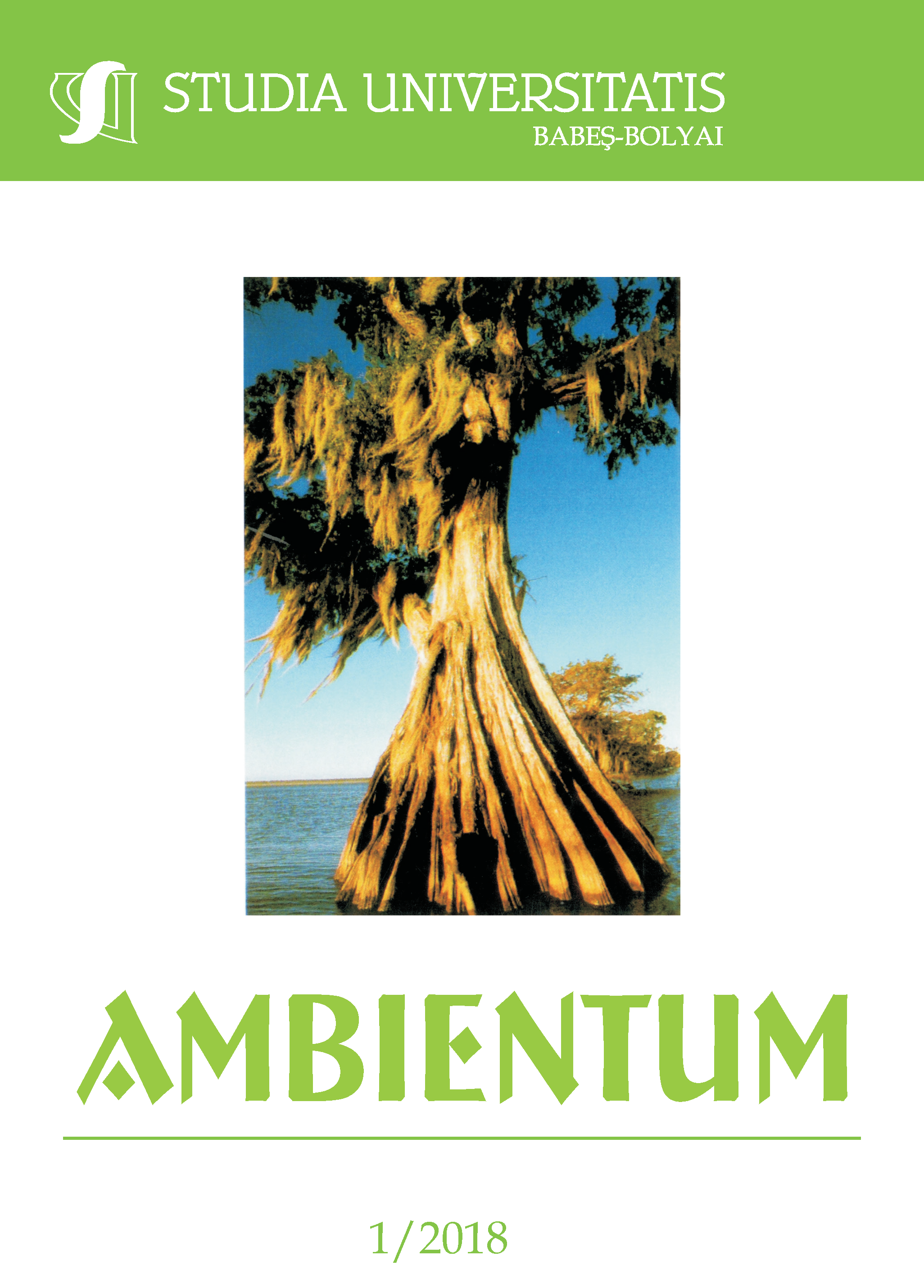DETERMINATION OF THE MONTHLY VARIATION OF RADON ACTIVITY CONCENTRATION IN SOIL
DOI:
https://doi.org/10.24193/subbambientum.2018.1.05Keywords:
radon in soil, monthly variation, radon potential, radon index.Abstract
The aim of this study was to assess the monthly variation of radon concentration in soil. Besides the radon concentration in soil, the measured parameters were soil permeability, air temperature, pressure, humidity and wind speed. The measurements were conducted for seven months, from December to June. For the soil permeability measurements RadonJok device was used and for determination of radon activity concentration in the soil it was used the Luk-3C device, equipped with scintillation cells. The highest radon concentration was measured in June (48 kBq m-3). Due to precipitations, on the soil surface a water film was created and as a result the radon could not diffuse into the atmosphere. Because of high permeability, a lower radon concentration was measured on April, which was 17 kBq m-3. The permeability favored radon diffusion which decreased its quantity in soil. The highest radon potential was determined to be in June. The lowest was determined to be in April, when the soil permeability was at its highest value. The radon index was medium for January to May and high for June.
References
Alharbi S.A., Bataina B. and Ershaidat N.M., 2006, Seasonal variations and depth dependence of soil radon concentration levels in different geological formations in Deir Abu-Said District. - Irbid-Jordan: Radiation Measurements, 41, pp. 703-707.
Cosma C., Cucoș (Dinu) A., Dicu T., 2013, Soil and building material as main sources of indoor radon in Băița-Ștei radon prone area (Romania). - Cluj-Napoca. Journal of Environmental Radioactivity, 116, pp. 174-179.
Cosma C., Jurcuț T., 1996, Radonul și mediul înconjurător, Dacia Publishing, Cluj-Napoca.
Mikšová J., Barnet I.,2002, Geological support to the national radon programme (Czech Republic), Bulletin of the Czech Geological Survey, 77 (1), pp. 13-22.
Neznal M., Neznal M., Matolin M., Barnet I., Miksova J., 2004, The new method for assessing the radon risk of building sites. Prace Ceskeho Geologickeho Ustavu.
Niță D., Cosma C., Moldovan M., Papp B., 2010, Măsurători de radon în sol în zona Clujului - Cluj-Napoca. Ecoterra, 24, pp. 10-11.
Taipale T., Winqvist K., 1985, Seasonal variation in soil gas radon concentration - [s.l.]. The Natural Radiation Environment, University of Chicago, 145 (2-3), pp. 110-116.
Tauner A.B., 1964, Radon Migration in the Ground. A Review. The Natural Radiation Environment, University of Chicago, pp. 161-190.
World Health Organization, 2009, WHO handbook on indoor radon a public health perspective, 1 (4).
*** National Meteorological Administration - www.meteoromania.ro
Downloads
Published
How to Cite
Issue
Section
License
Copyright (c) 2018 Studia Universitatis Babeș-Bolyai Ambientum

This work is licensed under a Creative Commons Attribution-NonCommercial-NoDerivatives 4.0 International License.





 ISSN (online): 2065-9490 | ISSN (print): 1843-3855 | ISSN-L: 2065-9490
ISSN (online): 2065-9490 | ISSN (print): 1843-3855 | ISSN-L: 2065-9490